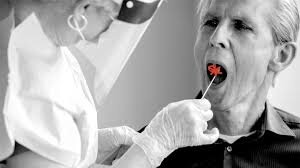Accurate blood pressure readings are crucial for diagnosing hypertension, but new research highlights how seemingly minor factors, like arm positioning, can significantly affect these measurements. In a study published in JAMA Internal Medicine, researchers discovered that the position of the arm during a blood pressure check can lead to differences of 4 to 7 mmHg, potentially resulting in misdiagnoses and unnecessary treatments.
The Study: Key Findings
Researchers analyzed blood pressure readings from 133 adults aged 18 to 80. The study found that blood pressure readings varied based on arm position:
- Arm resting on a hard surface (e.g., a desk): produced the most accurate readings.
- Arm resting on the lap: resulted in slightly elevated readings.
- Arm hanging by the side: led to the highest readings.
For example, if a person’s actual systolic reading is 115 mmHg, incorrect arm positioning could push this figure over 120 mmHg, categorizing them as having elevated blood pressure. This misclassification can lead to unwarranted medications and treatments.
Dr. Cheng-Han Chen, an interventional cardiologist, emphasized the importance of proper measurement techniques, stating, “Small differences in blood pressure readings can have significant implications for diagnosis and treatment.”
Implications of Misdiagnosis
The study suggests that incorrect positioning can artificially inflate blood pressure readings, potentially leading to a diagnosis of hypertension in individuals who may not actually have high blood pressure. This misdiagnosis can trigger unnecessary lifestyle changes and medications, which may not be needed.
Dr. Megan Kamath, a cardiologist at UCLA Health, reiterated the importance of correct arm positioning, saying, “A difference of just a few mmHg can alter treatment plans and impact long-term cardiovascular risk.”
Guidelines for Accurate Blood Pressure Measurement
To ensure precise blood pressure readings, the American Heart Association (AHA) recommends the following steps:
- Avoid caffeine, smoking, and exercise for at least 30 minutes before the measurement.
- Position the blood pressure cuff on the upper arm at heart level.
- Keep feet flat on the ground and back supported.
By following these guidelines and ensuring proper arm positioning—preferably resting on a hard surface—patients can obtain more accurate readings.
The Importance of Patient Advocacy
Patients should feel empowered to question their blood pressure readings and ask for a retake if they seem inconsistent. Accurate measurements are essential, both in clinical settings and at home. For individuals monitoring their blood pressure at home, Dr. Chen advises, “Always take measurements with your arm supported.”
Educating patients about the correct techniques for measuring blood pressure can prevent misdiagnoses and the resultant overtreatment of hypertension.
Understanding High Blood Pressure
High blood pressure, or hypertension, affects nearly half of adults in the United States and is more prevalent among non-Hispanic Black adults compared to other ethnic groups. This condition increases the risk of heart disease and stroke, contributing to hundreds of thousands of deaths annually.
Symptoms of high blood pressure may not appear until significant damage has occurred. When symptoms do manifest, they can include skin flushing, red spots in front of the eyes, and dizziness.
Prevention Strategies
To lower the risk of developing hypertension, the CDC recommends:
- Eating a balanced diet rich in fruits and vegetables
- Maintaining a healthy weight
- Engaging in regular physical activity (aim for at least 2.5 hours of moderate-intensity exercise weekly)
- Avoiding smoking and limiting alcohol intake
- Ensuring adequate sleep
Conclusion
The recent findings underscore the importance of accurate blood pressure measurement and the impact of arm position on readings. Ensuring that your arm is resting on a solid surface can mean the difference between a correct diagnosis and unnecessary treatment. Both healthcare professionals and patients should prioritize proper measurement techniques to improve health outcomes and prevent the mismanagement of hypertension.




